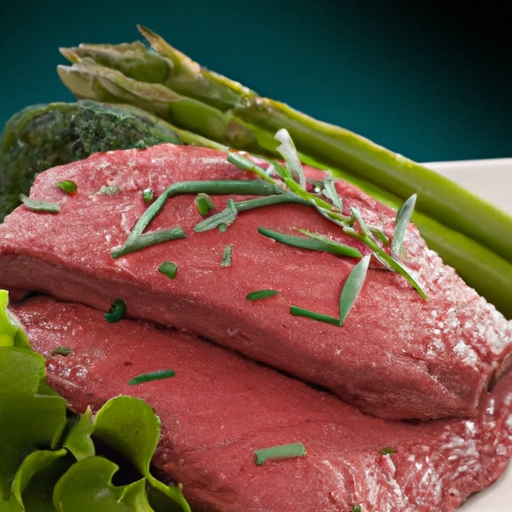Beef Tenderloin
Description

Beef tenderloin is a prime cut of beef, heralded for its tenderness and delicate flavor. It is the most tender cut because it comes from a muscle that does very little work, the psoas major, making it a premium choice for steak connoisseurs and chefs alike. Beef tenderloin can be prepared in various ways, from roasting whole to slicing into steaks known as filet mignon. Its versatility is matched by its ease of cooking, often requiring simple seasoning to enhance its natural taste.
Common uses
Beef tenderloin is commonly reserved for special dishes and occasions due to its higher price point compared to other cuts. It can be found in a variety of dishes including elegant roast preparations, gourmet sandwiches, and as the star of a steak dinner plate.
Nutritional value
Calories
A 3-ounce (85g) serving of cooked beef tenderloin contains approximately 175 calories.
Protein
This same serving size offers about 24 grams of high-quality protein.
Fat
Beef tenderloin is relatively low in fat, with around 7 grams per serving, though this can vary depending on how it's trimmed and cooked.
Carbohydrates
Beef tenderloin has no carbohydrates, making it a suitable option for low-carb diets.
Vitamins
It provides valuable B vitamins, particularly B12, crucial for nerve health and energy.
Minerals
Minerals such as zinc, selenium, and iron are also present in notable amounts, supporting immune function and oxygen transport.
Health benefits
Thanks to its high protein content and essential nutrients, beef tenderloin can be a beneficial part of a balanced diet. The B vitamins support metabolic processes, while the minerals play a key role in maintaining a healthy immune system and red blood cell production.
Potential risks
While beef tenderloin is nutritious, excessive consumption of red meat is linked to increased risks of certain health conditions. It's important to enjoy it as part of a diverse diet that includes plenty of fruits, vegetables, and whole grains.
Common recipes
Beef tenderloin is often the centerpiece of dishes such as Beef Wellington, filet mignon, and chateaubriand. It is also a popular choice for steak tartare when sourced from a reputable supplier and handled properly.
Cooking methods
Popular cooking methods for beef tenderloin include grilling, roasting, pan-searing, and sous-vide, each technique bringing out its unique flavor and texture.
Pairing with other ingredients
It pairs exceptionally well with bold red wines, creamy sauces like béarnaise, and earthy sides such as roasted mushrooms or garlic mashed potatoes.
Summary
Beef tenderloin is a luxurious cut known for its tenderness and mild flavor. It is a celebrated ingredient in various gourmet recipes and is packed with essential nutrients. While it should be consumed in moderation due to the potential health risks associated with high red meat intake, it can be a delightful and nutritious addition to a balanced diet when enjoyed responsibly.